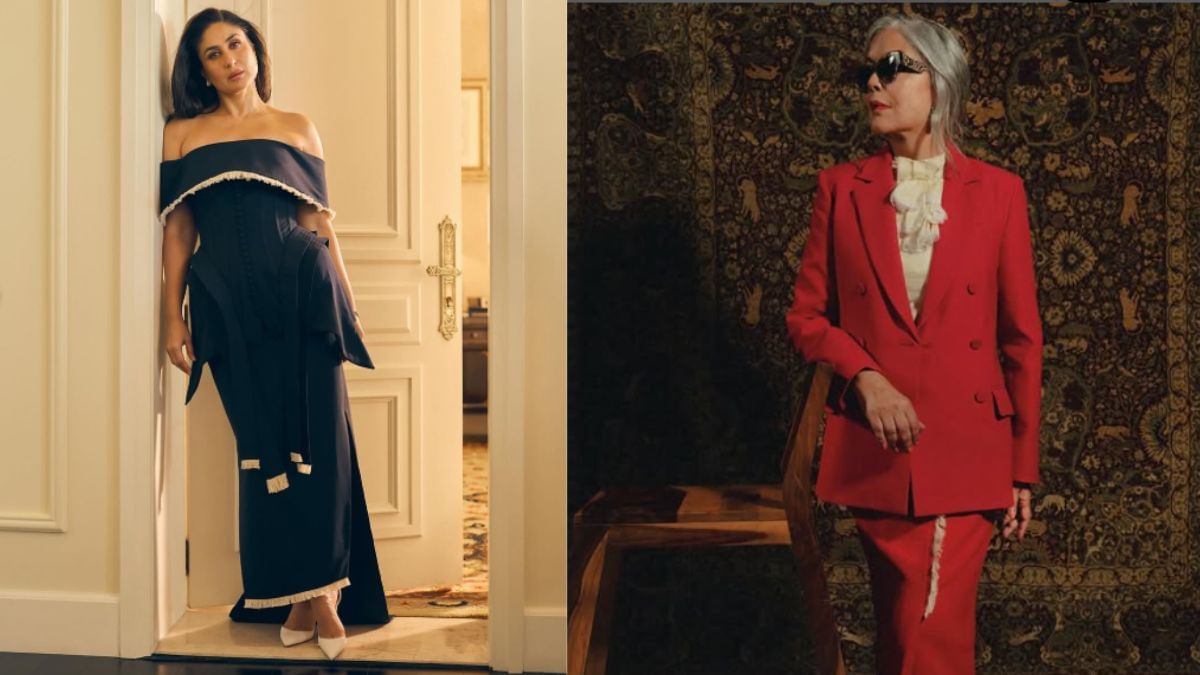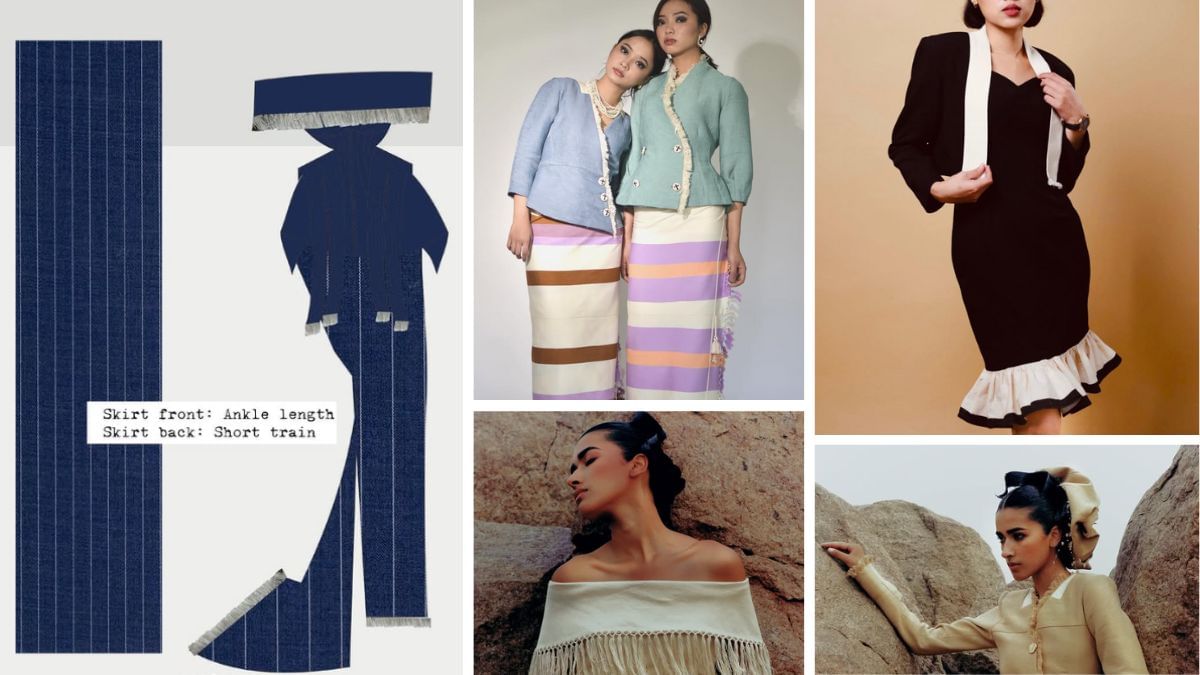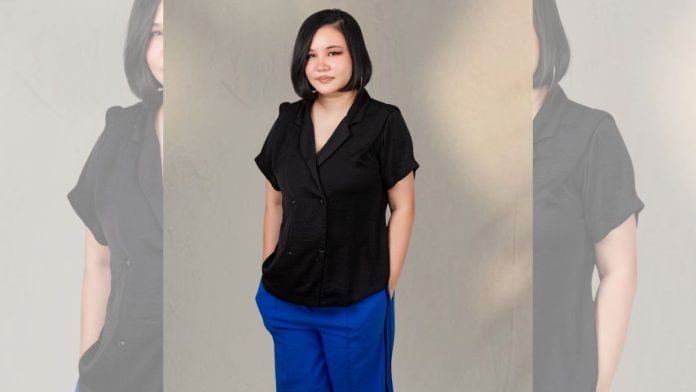New Delhi: When filmmaker and stylist to the stars Rhea Kapoor reached out to Mizo designer Hannah Khiangte for a look for Kareena Kapoor Khan, it was a pinch-me moment. What’s more, it was for the launch of a new Bvlgari perfume.
It’s not often that Mizoram finds a place in the Indian fashion circuit, dominated by Mumbai and Delhi. But Khiangte’s modern twist to traditional Mizo designs is becoming the talk of tinsel town. Her clothes were worn by Zeenat Aman for a spread in Harper’s Bazaar last year. And in 2023, she made a splash at the Bombay Times Fashion Week. Khiangte is bringing the traditional Mizo puan—a colourful, vibrant woven cloth—to the mainstream.
“Rhea had been showing love to our latest campaign ‘Rahbi Thar’, and she personally reached out because they were looking for something fresh and rooted in craft. She did tell us that Kareena would wear it, so it came with that weight,” said Khiangte.

The ensemble that Kapoor wore for the Bvlgari event was a pinstripe skirt with tassels and an off-shoulder corset in deep blue. According to Khiangte, the colour represents hope and optimism, and is worn by Mizo women during the New Year celebrations or special occasions. A wide band trimmed with a cream fringe edge on Kareena’s outfit is an ode to the edges found in the traditional handwoven textiles.
“Showcasing the puan on Kareena, we bring this heirloom to a global stage with pride and purpose,” wrote Rhea Kapoor in her Instagram post.
The accolades have been pouring in since then.
“Thank you Rhea for bringing out NE textiles and giving space. Not only the finished product but also the inspiration behind. much needed,” read a comment on the post. People from the Northeast have lauded Kapoor for showcasing a designer from the region.
“Rhea and the team always gets it right. In recent times no one has promoted indigenous work so beautifully – rooted in tradition and wrapped in elegance,” said another comment.
Reimagining puan
Hannah’s ‘Rahbi Thar’ collection, which caught the stylist’s eye, honours indigenous Zo textiles while reimagining how they exist in today’s world. Released in April, it is curated for women who consider fashion a form of self-expression and can appreciate heritage outside the bounds of convention.
Khiangte’s ensemble also graced Harper’s Bazaar India’s 15th anniversary cover story edition in 2024. On the cover, Aman sported a shirt designed by Khiangte, with a red Valentino blazer. In 2023, Khiangte was one of the talked about designers at the Bombay Times Fashion Week, standing out for blending elegance with the traditional fabrics of Northeast.
“My work is a reflection of my roots—quiet strength, fluidity, and depth,” said Khiangte. The designer embraces her Mizo heritage through the textiles and silhouettes featured in her work, emphasising elegance and pride.
“There’s a love for layers, textures, and gentle forms in our traditions. I translate that into contemporary pieces while always keeping a strong connection to where I come from, both culturally and spiritually,” said the 35-year-old designer.

For Khiangte, the puan is a constant source of inspiration, and she mixes it with elements of androgyny and subtle punk influences she grew up with. She reimagines the traditional skirts of Mizoram into suits, knot dresses, jumpers, crop tops, and culottes.
Her studio-cum-workshop in Chandmari, Aizawl—on the city’s busiest road—is where the magic happens. It’s where she created Kareena’s look.
Khiangte’s design journey began in Lunglei, a town in Mizoram, where she was raised in a joint family. A shy child, she found expression through art projects and music. She learnt to sew and knit under the encouraging supervision of her grandmother.
“My teen years were filled with experimenting—thrift shopping, reconstructing clothes, styling friends,” said Khiangte. “Growing up in the Northeast, style is second nature. We didn’t always have access to big brands, so we created our own trends.”
Her inspiration came from local musicians, the strong women in her life, and a bit of punk. “There was always a DIY spirit—fashion as expression, rebellion, and identity all rolled into one,” Khiangte added.
One of her idols is English model and actor Agyness Deyn, known for her androgynous style.
Having launched her label in 2013, what finally made Khiangte find her vision was the rich heritage of puan. She hasn’t looked back since.
Also read: Babri Masjid to Gujarat riots—exhibition traces Gulammohammed Sheikh’s artistic journey
Plans to expand
Working with traditional female weavers from Mizoram, Khiangte’s designs are a happy union of tribal fabric and Western wear. Her designs have also been worn by Bengali actor Parno Mittra and Meghalayan actor and singer Andrea Tariang for red carpet appearances.
Khiangte tries to balance her daily life with the demands of her label.on most days, she handles everything from ideation to overseeing production and even packing orders. Prayer, time with her daughter, and an exercise routine keep her grounded.
Khiangte has plans to expand her label beyond Mizoram, but she does not want to rush the process.
“Right now, I enjoy the intimacy of knowing who wears my clothes and why. When the time is right, I do see pop-ups or concept spaces in cities that understand and appreciate our aesthetic. But Mizoram will always remain the heart and home of the brand.”
(Edited by Prasanna Bachchhav)





Having lived in north-east India for the greater part of my life I can vouch for the fact that Mizoram is the most unwelcoming state of India. The locals are hostile to all non-Mizos. As a non-Mizo it is simply impossible to get a job or start a business in Mizoram. The xenophobia and hatred has to be seen to be believed.